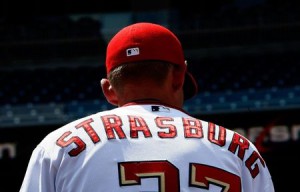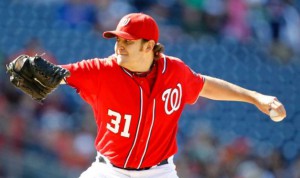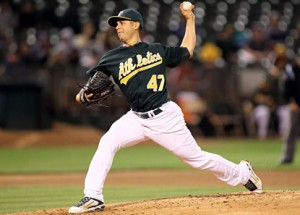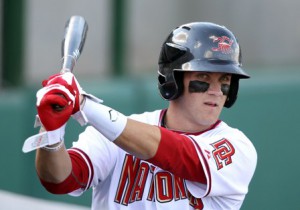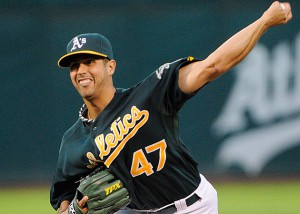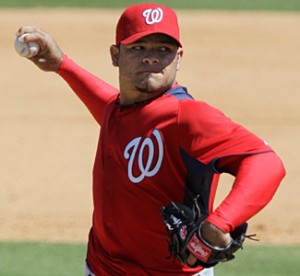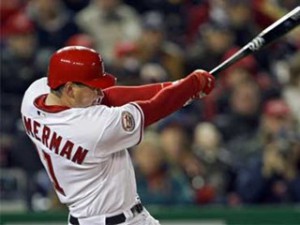Here we are, September 1st, and every single columnist and blogger who covers baseball has, by law, added their 2 cents to the Stephen Strasburg shutdown debate. And as the imminent shutdown date approaches (I had predicted 9/12 being his last start either in a post or the comments section, and that date still seems to hold; 9/12 gives him 3 more starts, which seems to match what we’ve been hearing lately out of Davey Johnson and the front office), I’m honestly not looking forward to the coming blitz of additional opinions from the blogosphere talking about what idiots the Nationals are, blah blah.
My succinct opinion on the shutdown can be expressed in this metaphor; if you had open heart surgery, and your cardiologist says to you, “take it easy next season and only pitch 160 innings,” wouldn’t you follow his advice? Both the doctor who performed Strasburg’s surgery (Lewis Yocum) and the famed James Andrews (together essentially the two leading experts on the injury and the surgery) have come out in support of the National’s conservative plan. To every other pundit out there who says something like, “there’s no proof that shutting him down will protect him in the long run,” I’ll say this: I trust the guy with the M.D. behind his name over the internet dork sitting in his mom’s basement who thinks he knows better.
Even my wife has added her 2 cents; while watching Saturday’s game (a pretty amazing back and forth offensive outburst ending with St. Louis scraping a run against Drew Storen to take it 10-9), one of the telecasters added his opinion on the matter and my wife asked me why the Nats didn’t just “let him pitch less” earlier on in the season. A common theme for Strasburg shutdown critics; to which I say this: if you think the whole shutdown thing isn’t playing will with the Veterans in the Nationals clubhouse, exactly how do you think it would have played out if the entire pitching rotation was manipulated all season on account of one guy? Baseball is a team game; you have 25 guys out there who contribute to each win, and I’m pretty sure the veterans on this team wouldn’t have taken well to having their routines thrown off in an effort to squeeze 5 more starts out of a 24 yr old (no matter how promising he may be).
But I digress slightly from the point of this post. I’m of the opinion that we may see an interesting phenomenon occur when Strasburg gets shutdown for the season. We may see a theory that Bill Simmons has come to popularize called “The Ewing Theory.” In essence, the theory says that teams with stars who receive an inordinate amount of media attention often perform better once that star has either left the team or gone down with injury. Teams rally around each other after their star player either leaves or goes down with injury partly because of the “relief” they get from media questions, partly to show that they can win without the big name, and partly (in some cases) because the star player was “holding the team back” by virtue of his presence (this happens more in sports like Basketball, where one player can really command an entire team’s attention; less so in Football or Baseball). It is named after Patrick Ewing because his 1998-99 New York Knicks ended up in the finals despite Ewing going down with injury. The phenomena has repeated itself in a number of notable ways over the years; off the top of my head these situations fit the theory:
- UVA basketball went as far in the NCAA tournament without Ralph Sampson in 1984 than they ever did with him.
- The NY Giants won the super bowl the year AFTER Tiki Barber retired.
- The Seattle Mariners won 116 games the year after Alex Rodriguez left as a free agent.
- The Tennessee Volunteers won the National title the year AFTER Peyton Manning graduated.
I think this team may exhibit a bit of inadvertent Ewing Theory once Strasburg sits. You have to think the players are tired of being asked about it; who’s to say they won’t just keep on rolling and play even better once Strasburg gets shutdown and the issue is done? Plus, here’s some corroborating evidence that may help out;
1. After September 12th, the Nats will only miss three Strasburg starts. The difference between Strasburg starting those three games and John Lannan is likely to be nearly negligible. Strasburg’s Wins above Replacement (bWAR) figure for the season is 2.6 right now through 26 starts. That’s .1 WAR per start that Strasburg gives the team over a replacement player. And Lannan isn’t exactly a replacement-level pitcher; he owns a sub 4.00 ERA and a 103 ERA+ for his career. Lannan’s WAR for his two spot starts this year? Exactly .2, or the same .1 WAR contributed per game as Strasburg.
2. Lannan is the quintessential guy pitching for a contract, and in all likelihood will use these three spot starts to showcase himself for his eventual new team in 2013. It isn’t that Lannan isn’t a good pitcher, its just that he isn’t the type of guy Mike Rizzo likes to have in his rotation (i.e., power arms with high k/9 rates). So I’d bet dollars to donuts that Lannan pitches three quality games in mid-to-late September, then gets left off the post-season roster and eventually gets non-tendered at the arbitration offer deadline.
3. Of the 6 series that the Nats play between September 12th and the end of the season, at least 3 will be against teams with no playoff implications (home-and-home versus Philadelphia plus a 4-game home series against Milwaukee). The Nats are also at St. Louis in the second to last series, by which time the Cardinals may very well be completely out of the Wild Card race. If the end of 2011 showed us anything, its that teams out of playoff contention in September have a tendency to play really, really weak lineups of prospects and September 1 call-ups. Look at some of the lineups that the Nats faced in September of last year (especially some of the New York line-ups): they were literally two regulars and 7 AAA guys. There’s no reason to think that the Nats won’t improve on the .655 winning percentage they’ve had for the last two months despite not having Strasburg in the rotation.
But, the critic may say, wouldn’t you rather have Strasburg pitching Game 1 of your divisional series? Well, yes of course. In arguably putting out a playoff rotation of Strasburg-Gonzalez-Zimmermann-Jackson is better than Gonzalez-Zimmermann-Jackson-Detwiler. But, our playoff rotation is still pretty darn good. Using the probable playoff teams as of this writing, here’s how our playoff rotation would rank with other NL playoff teams (the ranking is league rank in ERA)
- Washington: Gonzalez (12), Zimmermann (8), Jackson (17), Detwiler (13). Strasburg, btw, is 10th.
- Cincinnati: Cueto (1), Latos (27), Arroyo (29), Bailey (37). Leake, their #5 starter, is 43rd.
- San Francisco: Cain (4), Vogelsong (9), Bumgarner (11), Zito (42). Except there’s no way they’d go with Zito in a playoff series, so you’d be seeing Lincecum, amazingly ranked 50th of 51 qualifying NL starters in ERA this year.
- Atlanta: Maholm (14), Hudson (25), Minor (46). Their likely 4th starter would be Medlen, who in 6 starts has a 1.71ERA.
- St. Louis: Lohse (3), Wainwright (32), Westbrook (33). Their likely 4th starter would be Garcia over Lynn, but Garcia’s era would rank him 45th or so if he qualified.
San Francisco’s rotation looks pretty tough. Until you remember that the Nats swept them at home and just beat them 2 of 3 on the road for a 5-1 season split. In fact, of probable playoff teams here’s the Nats current season records:
- Cincinnati: 5-2. We beat them 3 of 4 in April, then took 2 of 3 in Cincinnati in May.
- San Francisco: 5-1. Swept at home, took 2 of 3 on the road.
- Atlanta: 10-5 at current, with 3 critical games in Atlanta in mid September.
- St. Louis: 3-1 in the series just concluded, with a 3 game set in St. Louis in late September.
Wow. I didn’t even realize just how well the Nats have played against the league’s best until I looked it up. This has to give any Nats fan some serious confidence heading into a playoff series, no matter who we may end up playing.
Here’s hoping the Strasburg shutdown doesn’t affect the team as much as pundits seem to believe.
